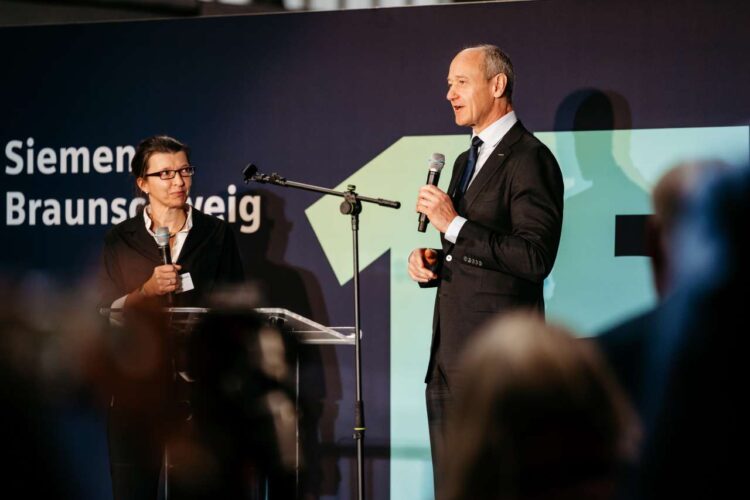The Braunschweig site of Siemens Mobility is celebrated its 150th anniversary this week (Thursday 23 November).
The site is the world's largest and oldest development and production site for rail automation and signalling technologies, having been founded by Braunschweig businessman Max Jüdel and mechanical engineer Heinrich Büssing in 1873. Siemens took over the factory in stages by Siemens in the decades following its opening.
Guests attending today's celebration event included Volker Wissing, the Federal Minister for Digital Affairs and Transport, Olaf Lies, the Lower Saxony Minister for Economic Affairs, Transport, Housing and Digitalization, and Roland Busch, CEO of Siemens AG.
Innovations from Braunschweig have contributed to and driven the development of railway infrastructure worldwide. Today, Siemens Mobility continues to use the site for research and development of technology to make rail infrastructure more efficient, sustainable and reliable.
Siemens asserts that the Braunschweig site is well equipped to contribute to the Germany federal government's plan to modernise for the country's rail network with the Digital Rail Germany (DSD) program. It has invested about €60 million in the site and production facilities over the past five years, and employs around four thousand qualified workers from forty-six countries at its Braunschweig plant. The workforce includes around 1,100 in production and assembly, around 900 in research and development, and around 1,500 in global project management. In the most recent financial year, it hired 130 new workers and 54 apprentices. 98 percent of previous apprentices now work for the company.

During the anniversary celebration, Siemens Mobility announced that it had signed a letter of intent with Continental, providing up to a hundred employees at Continental's Gifhorn site with the opportunity to work at Siemens Mobility in Braunschweig over the next five years if they are qualified. Continental plans to gradually end its business activities at its Gifhorn plant by the end of 2027. Andre Rodenbeck, CEO of Siemens Mobility Rail Infrastructure, described Braunschweig's plans as “a win-win situation for both companies, but above all for people in this region.”
Max Jüdel and Heinrich Büssing founded the Braunschweig company 150 years ago with the aim of revolutionising railway technology. In the company's first two decades, it registered over ninety patents and built more than a thousand interlockings that controlled over twelve thousand switches and signals.
The railways spread very quickly during the nineteenth century, along with the signalling technology that enabled it to operate.
Siemens invented the renowned K 50 signal relay in the 1950s, which transformed the market at the time as much as Europe's first digital interlocking did in 2018 and the shift of interlocking logic to the cloud did four years later.
After the second world war, there was a significant shift from mechanical interlocking systems often operated with human muscle power to electromechanical solutions. The K 50 signal relay was the basis for relay interlockings, the first step taken towards automating rail traffic before the computer age. Relay expertise is still relevant for Siemens today, as half of the relay interlockings are still in use in Germany's rail network.
K 50 relays are still needed as spare parts and the Braunschweig site has maintained its manufacturing expertise for relay technology.
Guests at the ceremony also experienced a live demonstration of the future of rail transport, seeing a turnout controlled (via the patented DS3 platform developed by Siemens Mobility) from the cloud at the click of a mouse. Future interlocking enables centralised, cloud-based control and safety technology for rail operations. It is already in use in Austria and Spain, and represents a major advance that offers substantial benefits, as it uses state-of-the-art, high-performance processors and can be controlled centrally from one rather than many separate interlockings.
Because it uses standard hardware, the DS3 is easy to maintain, which reduces operating costs.
Andre Rodenbeck said, “Over the past 150 years, our site in Braunschweig has been the think tank for the rail transportation of yesterday, today and tomorrow. Today, we not only can look back on a long history of pioneering work accomplished here for rail transportation in Germany and the world, but also look to the future. Siemens Mobility has created a unique product portfolio, invested heavily in this site, built up a highly qualified team, and created optimal production conditions. We are ready and eager to play a major role in shaping the mobility of tomorrow with our innovations from Braunschweig.”